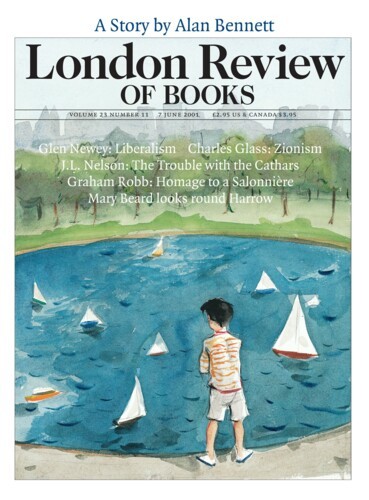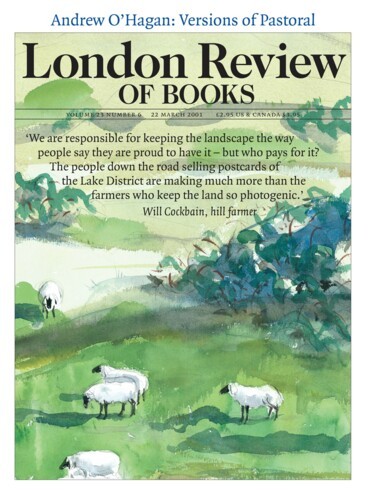Le Roy Ladurie’s fascination with what he referred to in his inaugural lecture at the Collège de France in 1973 as the ‘immobile’ history of France from the late 14th to the early 18th century sprang partly from the contrast it presented with the trente glorieuses. His own youth had been spent in the conservative, Catholic milieu of rural Normandy where four of his twenty aunts and uncles belonged to religious orders and a pre-Voltairean version of the 18th century seemed, as he put it, ‘present in every haystack’. He had hardly set foot outside Normandy until he fled the German advance in 1940 with his mother and siblings. Parts of his childhood world were blown apart. Caen, a ‘Balzacian’ town when he went to school there, was destroyed by Allied bombing in 1944 and rebuilt in concrete in the 1950s and 1960s.
Richard Vinen
Richard Vinen teaches at King’s College London. A History in Fragments: Europe in the 20th Century is published by Little, Brown.
Electric Koran
Richard Vinen, 7 June 2001
In 1957, Louisette Ighilahriz, a member of the Front de Libération Nationale (FLN) in Algeria, was captured by French paratroopers. She was tortured and repeatedly raped. Until a French Army doctor arranged for her to be transferred to hospital and then to prison, her only hope was that her guards might be careless enough to leave her with the means of killing herself.
...
Our God is dead: Jean Moulin
Richard Vinen, 22 March 2001
One Monday morning in September 1940, Raymond Aron was lying in bed at a camp for Free French soldiers in Aldershot. His roommate, who had arrived the previous afternoon, asked him the time and, when told, replied: ‘Déjà sept heures moins vingt.’ Aron left the room. When he returned, his companion had shot himself. The inquest was unable to establish any motive for the...
Pieces about Richard Vinen in the LRB
No Mythology, No Ghosts: Second City?
Owen Hatherley, 3 November 2022
In the years before mass car ownership, Birmingham’s suburban workers were wholly reliant on the bus network. The landscape was denuded of the pubs, music halls and community life that defined the inner...
Read anywhere with the London Review of Books app, available now from the App Store for Apple devices, Google Play for Android devices and Amazon for your Kindle Fire.
Sign up to our newsletter
For highlights from the latest issue, our archive and the blog, as well as news, events and exclusive promotions.



